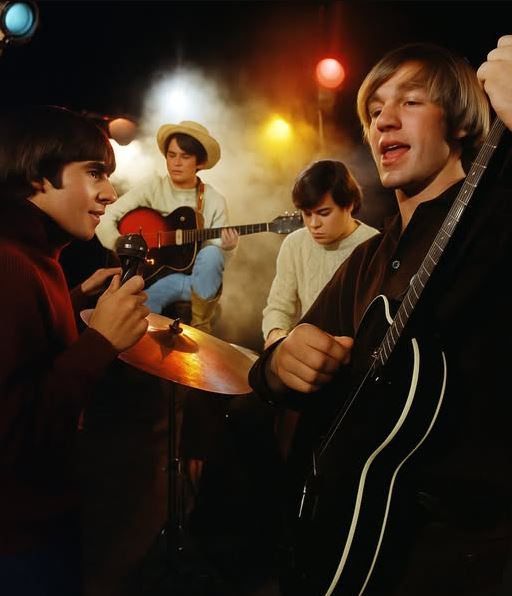
Few songs from the late 1960s capture the spirit of transformation, musical experimentation, and artistic growth like “Listen to the Band” by The Monkees. Released in 1969, this track is far more than a nostalgic piece of pop history—it’s a testament to a band evolving beyond its manufactured TV origins into a group striving for genuine musical artistry.
The Monkees’ Journey from Screen to Stage
The Monkees originally emerged as a television project designed to charm youthful audiences with catchy, lighthearted tunes and vibrant on-screen personalities. While their early hits captured the public’s imagination, by the late ’60s, the band members themselves sought more creative control over their music. This desire for authenticity and self-expression became central to their later work, with “Listen to the Band” standing out as a pivotal moment in their evolution.
Michael Nesmith, one of the band’s driving forces, both wrote and led the vocals on this track. His vision pushed the group toward a more mature, refined sound. Unlike their earlier bubblegum pop hits, this song blends elements of Americana, country rock, and baroque pop, signaling a bold departure from the Monkees’ original formula. It demonstrates a commitment to crafting music that resonates beyond television and fleeting trends.
Musical Sophistication and Artistic Depth
“Listen to the Band” is built on a steady rhythm that anchors a soulful brass arrangement, creating a rich and textured sound. This musical backdrop complements the song’s lyrical depth, where the repeated refrain—“Listen to the band”—serves as both a literal call to the audience and a symbolic statement of artistic intent. It challenges listeners to move past preconceived notions of the Monkees as a manufactured pop group and to truly appreciate their musicianship and creative effort.
Nesmith’s vocal delivery is contemplative, poised, and expressive, perfectly capturing the band’s transition from TV entertainers to legitimate recording artists. Each note resonates with the authenticity and self-assuredness of a group determined to define their own identity. The inclusion of live instrumentals by the band further underscores their growing autonomy and commitment to musical integrity.
Context in the Late 1960s Music Scene
During a period dominated by psychedelic experimentation, socially conscious lyrics, and rapid shifts in rock music, “Listen to the Band” offered a distinct, reflective alternative. Its sound bridges the gap between accessible pop sensibilities and more sophisticated musical exploration. By combining heartfelt lyrics, melodic hooks, and instrumental proficiency, the track reflects the broader artistic ambitions of The Monkees at the time.
While it may not have soared to the top of the charts immediately, the song has grown in stature over the decades. It is now recognized as a significant entry in the late ’60s catalog of genre-blending tracks that transcended conventional pop formulas. Today, it stands as a shining example of how The Monkees navigated commercial pressures while pursuing genuine artistic expression.
Why “Listen to the Band” Matters Today
For modern listeners who might dismiss The Monkees as a television novelty, this track offers a compelling invitation to reconsider. Its layers of musicality, thoughtful lyrics, and historical significance reward attentive listening. The song embodies a quiet but powerful assertion of independence, signaling that The Monkees were far more than the sum of their early pop hits.
Engaging with “Listen to the Band” is not just about enjoying a catchy tune; it’s about witnessing a moment of transformation. It’s a chance to experience a band in the midst of redefining themselves, striving to be heard on their own terms. The song’s message transcends its era: creativity and authenticity often emerge when artists push beyond expectations and challenge the boundaries set for them.
Experience the Legacy
“Listen to the Band” remains an enduring classic for fans of The Monkees and for anyone interested in the evolution of popular music. Its melding of styles, the sincerity of its delivery, and its historical context make it a rich listening experience that continues to resonate more than fifty years after its release.
Whether you are revisiting The Monkees’ catalog or discovering their work for the first time, “Listen to the Band” invites you to pause, reflect, and truly engage with the music. It is a reminder that behind every commercial success lies the effort, passion, and vision of dedicated artists.
In a world where music is often consumed quickly and superficially, this song encourages a deeper, more meaningful listening experience. Allow yourself four minutes with The Monkees’ “Listen to the Band”, and you may find a renewed appreciation for a group whose legacy extends far beyond television screens.